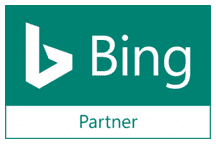What Is A Google Display Advertising?
A Google display ad is a visually appealing advertisement that appears on websites, mobile apps, and other digital platforms within the Google Display Network (GDN). These ads can take various forms, including image ads, video ads, rich media ads, and responsive ads, allowing advertisers to create engaging and interactive content to capture their audience’s attention.
Google display ads are designed to reach potential customers while they browse the web, consume content, or use apps. By leveraging the vast reach of the GDN, which consists of millions of websites and apps, advertisers can target specific audiences based on their interests, demographics, browsing behaviour, and other factors.

How Does The Google Display Network Work?
The Google Display Network (GDN) is a vast network of websites, mobile apps, and other digital platforms that allow advertisers to display their ads to targeted audiences. It operates through a real-time auction system where advertisers bid on ad placements and Google’s algorithms match the ads with the most relevant websites and apps based on the advertiser’s targeting criteria.
The GDN works in the following way:
Advertisers create display ads and set up campaigns within the Google Ads platform, specifying their targeting preferences, budgets, and bidding strategies.
When a user visits a website or app within the GDN, an ad auction takes place in real time, matching the available ad space with relevant ads from advertisers.
Google’s algorithms analyse the user’s browsing behaviour, interests, demographics, and other factors to determine the most relevant ads to display.
Advertisers bid on ad placements, and the highest bidder’s ad is displayed to the user, provided it meets the website’s or app’s criteria for ad relevance and quality.
When a user clicks or interacts with the ad, the advertiser is charged based on the bidding model they have chosen (e.g., cost-per-click or cost-per-impression).
The GDN provides advertisers with a wide range of targeting options, including contextual targeting (based on webpage content), audience targeting (based on user demographics and interests), and remarketing (targeting users who have previously visited the advertiser’s website).
How To Manage Google Display Advertising?
Effective management of Google Display ads is crucial for maximising the performance of your campaigns and achieving your advertising goals. Here are some key strategies for managing Google Display ads.
Campaign Setup and Structure – Start by setting up well-organised campaigns and ad groups within the Google Ads platform. Group your ads and targeting options based on themes, products, or services to optimise performance and make data analysis more accessible.
Audience Targeting – Leverage Google’s targeting options to reach the right audiences. Use interests, demographics, in-market audiences, and remarketing lists to serve ads to users who are most likely to be interested in your products or services.
Ad Creation and Design – Create visually appealing and compelling ads that grab the user’s attention. Use high-quality images, concise copy, and clear call-to-action buttons to encourage user engagement. Experiment with different ad formats, such as responsive ads, to ensure your ads display optimally across various devices and ad placements.
Bid Management and Budget Optimisation – Monitor your campaign performance closely and adjust bids and budgets based on data-driven insights. Use automated bidding strategies like target CPA (cost-per-acquisition) or target ROAS (return on ad spend) to optimise your campaigns for efficient ad spend.
Ongoing Optimisation – Continuously analyse performance metrics, such as click-through rates (CTR), conversion rates, and cost-per-conversion, to identify areas for improvement. Test different ad variations, targeting options, and bidding strategies to refine your campaigns and achieve better results.
Remarketing and Audience Expansion – Implement remarketing campaigns to re-engage with users who have previously visited your website or interacted with your ads. Additionally, consider expanding your audience reach by exploring similar audiences or in-market audiences to attract new potential customers.
Campaign Monitoring and Reporting – Regularly monitor your campaigns and generate performance reports to track key metrics, identify trends, and make informed decisions about optimisations and budget allocation.

What’s Included In Google Display Advertising Management Services?
Google Display Ads management services typically include a comprehensive range of activities to ensure the success of your campaigns. Here are some of the key elements that are typically included:
Campaign Setup and Configuration – Setting up and configuring Google Display campaigns, including creating ad groups, defining targeting options, selecting ad placements, and setting appropriate bidding strategies.
Ad Creation and Design – Developing visually appealing and effective display ads that capture user attention and drive engagement. This may include creating image ads, video ads, responsive ads, and other ad formats tailored to your business and audience.
Audience Targeting and Remarketing – Implement effective audience targeting strategies, such as interest-based targeting, demographic targeting, remarketing, and similar audience targeting, to ensure your ads reach the most relevant users.
Bid Management and Budget Optimisation – Monitoring and adjusting bids based on performance data, utilising automated bidding strategies (e.g., target CPA, target ROAS), and optimising budget allocation to maximise efficiency and return on investment.
Campaign Optimisation and Testing – Implementing ongoing optimisations based on data insights, such as testing ad variations, refining targeting strategies, adjusting ad placements, and leveraging remarketing campaigns.
Performance Tracking and Reporting – Regularly analysing campaign metrics, such as impressions, clicks, click-through rates (CTR), conversion rates, and cost-per-conversion, and providing comprehensive performance reports.
Strategic Guidance and Consultation – Providing strategic advice, consultation, and recommendations to help businesses align their Google Display campaigns with their overall marketing goals and achieve long-term success.
Campaign Monitoring and Support – Continuous monitoring of campaigns to identify and address any issues or errors, ensuring smooth operation and optimal performance.
How Much Does The Google Display Network Cost?
The cost of advertising on the Google Display Network (GDN) can vary depending on several factors, including your bidding strategy, targeting options, ad format, industry competition, and overall advertising budget.
Google Display Network (GDN) advertising operates on a pay-per-click (PPC) or pay-per-impression (PPM) model, where advertisers bid on ad placements and pay based on user interactions (clicks or impressions).
The cost is determined through an auction system, where advertisers compete for ad placements. The final cost you pay depends on factors such as:
Bidding Strategy – Advertisers can choose between manual bidding, where they set their bid amounts, or automated bidding strategies like target CPA (cost-per-acquisition) or target ROAS (return on ad spend), which automatically adjust bids to meet your target goals.
Targeting Options – The more specific and targeted your audience, the higher the competition and costs may be. Targeting options like interests, demographics, and in-market audiences can impact the cost per click or impression.
Ad Format and Quality – The format and quality of your ads can influence costs. Well-designed, engaging ads tend to perform better and may have lower costs compared to less appealing ads.
Industry Competition – Highly competitive industries, such as e-commerce or finance, may have higher costs due to increased advertiser demand for ad placements.
Geographic Location – The cost can vary based on the geographic location you’re targeting, with more expensive markets typically having higher advertising costs.
While there is no fixed cost for advertising on the GDN, as it’s determined through an auction system, it’s important to set realistic budgets and monitor your campaign performance closely to ensure you’re getting the best return on your advertising investment.
Measuring Display Advertising Performance
Measuring the performance of your Google Display ads is crucial to understanding the effectiveness of your campaigns and making data-driven optimisations. Here are some key metrics:
Impressions – The number of times your ads were displayed on websites or apps within the Google Display Network.
Clicks – The number of times users clicked on your ads, indicating their interest in your products or services.
Click-Through Rate (CTR) – The per cent of impressions that resulted in clicks, calculated as (clicks/impressions) x 100. A higher CTR indicates that your ads are more relevant and engaging to your target audience.
Conversion Rate – The per cent of clicks that resulted in a desired action, such as a purchase, lead submission, or website sign-up. This metric helps you understand how effectively your ads drive conversions.
Cost-per-click (CPC) – The average amount you pay for each click on your ads. Monitoring your CPC can help you evaluate the cost-effectiveness.
Cost-per-Conversion – The average amount you pay for each conversion generated from your ads. This metric allows you to assess the return on investment (ROI) of your campaigns.
View-Through Conversions – Conversions that occur after a user has viewed your ad, even if they didn’t click on it. This metric is valuable for understanding the impact of your ad’s branding and awareness.
Reach and Frequency – The number of unique users who saw your ads (reach) and the average number of times they saw your ads (frequency). These metrics help you evaluate the coverage and potential saturation of your campaigns.
Viewability – The percentage of ad impressions that were seen by users, as opposed to being displayed in areas of a webpage that were not viewable.
By regularly analysing these metrics and generating performance reports, you can identify trends, spot areas for improvement, and make informed decisions about optimising your Google Display campaigns.
Get In Touch With Reposition To Managing Your Google Display Advertising!
Reposition specialises in Google Display advertising management. With a team of experienced professionals and a data-driven approach, Reposition can help you maximise the effectiveness of your Google Display campaigns.
By partnering with Reposition, you can benefit from:
Comprehensive Campaign Management – Reposition will handle all aspects of your Google Display advertising, from campaign setup and configuration to ad creation, audience targeting, bid management, and ongoing optimisation.
Expertise and Industry Knowledge – Reposition’s team stays up-to-date with the latest trends, best practices, and platform updates to ensure your campaigns remain competitive and effective.
Data-Driven Strategies – Reposition leverages data insights, performance metrics, and advanced analytics to make informed decisions and implement strategies that drive better results.
Customised Solutions – Reposition understands that every business has unique goals and challenges. They offer tailored solutions and personalised guidance to align your Google Display campaigns with your overall marketing objectives.
Continuous Support and Monitoring – Reposition provides ongoing support, monitoring, and reporting to ensure your campaigns are running smoothly and delivering optimal performance.
By leveraging Reposition’s expertise and comprehensive Google Display advertising management services, you can focus on your core business operations while they handle the complexities of running successful display campaigns.
Get in touch with Reposition today to discuss your advertising goals and explore how their services can help take your Google Display advertising to the next level.

 Organic
Organic  Digital Advertising
Digital Advertising  Resources
Resources  Content Marketing
Content Marketing  Resources
Resources  Who We Are
Who We Are 




